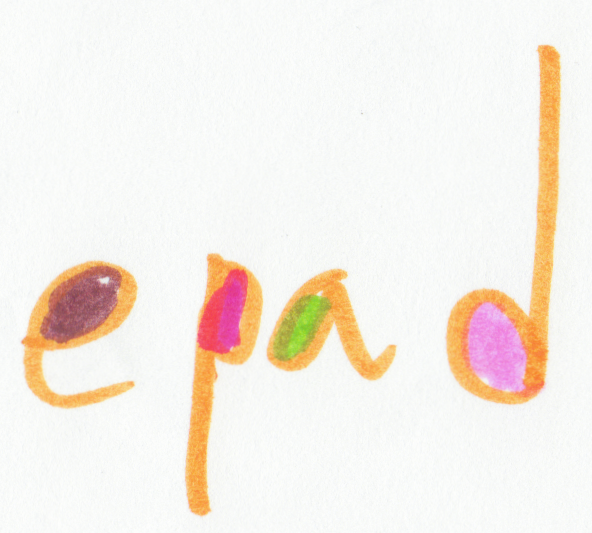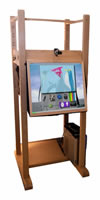Introduction
An ePAD is a computerized touch-screen tool for art therapists. The tool allows therapists to design individualized computer applications for particular clients. The resulting applications look like painting programs, but are usually simpler, can follow the therapeutic goals of the therapist designer, and can be adapted to particular user's needs, taking into account visual, auditory and motor capabilities. The tool also contains an artificially intelligent program that estimates how engaged a person is, and attempts to reengage them in the creative process should they become disengaged. The methods it uses to do this are fully customizable by the therapist designer. Finally, the tool logs interactions for subsequent therapist assessment, possibly a more accurate and less intrusive method than traditional paper-based methods.
An ePAD uses a camera and computer vision software to track what a person is doing, and a back end that monitors the user's activities and estimates, among other things, their level of engagement using a partially observable Markov decision process (POMDP). The POMDP uses decision theoretic methods to reason about what actions the device can take to maintain a user's engagement. For example, the device might issue an audible prompt, or might modify the interface (e.g. by adding a new color). An ePAD can use its user models to adapt its strategy over time, or to aid a therapist with assessment.The ePADs are fully customisable by art therapists, allowing them to add new activities, or change the device's policy. This full cutomizability allows a therapist to come up with new and creative art activities for their clients that adhere to their principles of therapy, and their goals for a particular user. Their customized application can still leverage the powerful back-end artificial intelligence and computer vision algorithms that allow the client device to track and respond to the user appropriately.
Our first prototype of the tool has been pilot tested in a long-term care facility with a group of six art therapists and their clients, and has received very positive reviews from both groups of users. Our current goals are to (1) redesign and redevelop the tool, taking into account the feedback we have received, and (2) to perform a larger scale multi-site, multi-national study of the use of the device by therapists and their clients. We are a unique and multi-disciplinary team of computer science specialists in artificial intelligence (AI) and human-computer interaction (HCI), biomedical engineers, industrial designers and arts therapists.
Read more about the benefits of art therapy in improving the quality of life of cognitively disabled older adults here »
Read more about technology, software and hardware used in ePad here »
Meet the team of researches working on the ePad project here »

